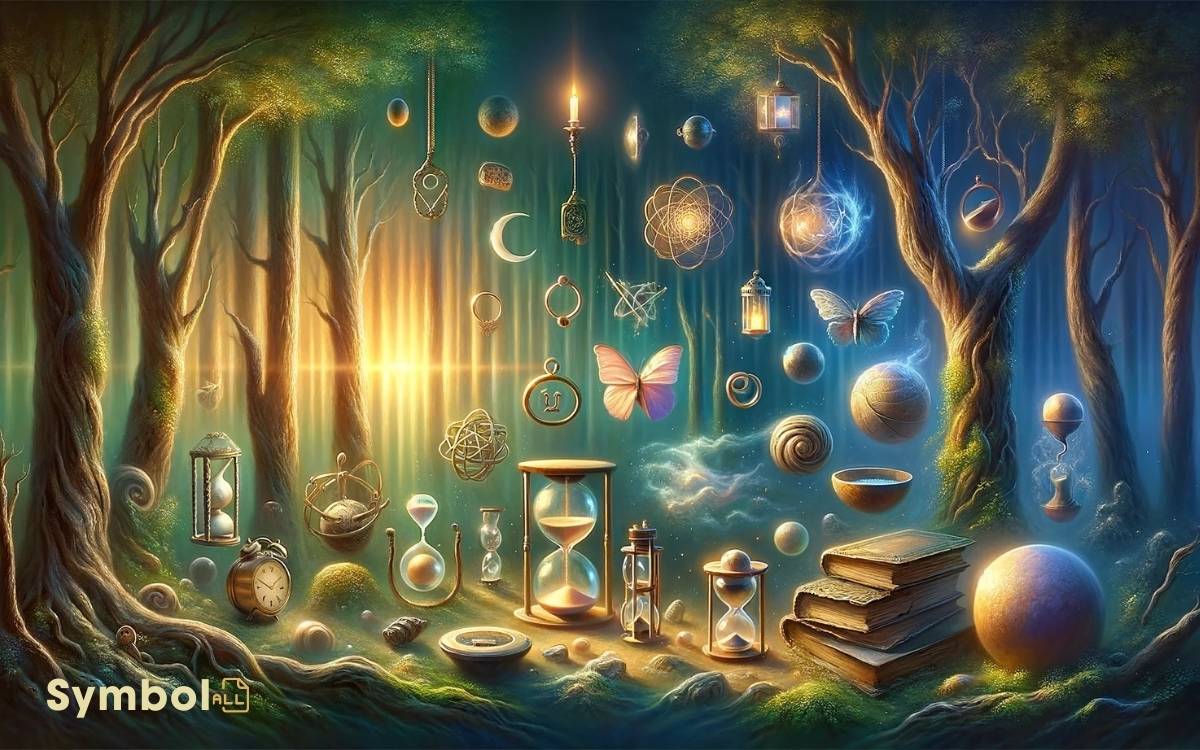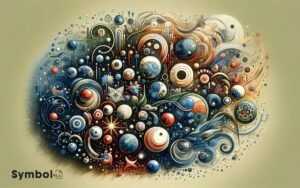A Painting That Uses Symbolism Shows Objects That: Explains!
In a painting that utilizes symbolism, you’re not just looking at mere objects. You’re peering into a world where each element is a charged symbol, holding deep historical, emotional, and cultural significance.
Think of stormy seas symbolizing turmoil, or sunrise heralding new beginnings. These symbols aren’t random; they’re meticulously chosen to reflect societal norms, values, and the universal human experience.
Through them, artists convey complex narratives, challenge perceptions, and connect deeply with you on a soulful level.
As you explore these visual tales, you’ll uncover layers of meaning, inviting a rich understanding of the artwork and the world it encapsulates.

Key Takeaways
Unveil Historical Contexts
To fully grasp the symbolism in paintings, it’s imperative to first peel back the layers of their historical context, revealing the nuanced influences that shaped the artist’s vision.
You’ll discover that each brushstroke isn’t just an aesthetic choice but a reflection of the era’s political, religious, and social dynamics.
For instance, a seemingly simple flower might symbolize fleeting beauty or mortality, deeply rooted in the cultural beliefs of the time.
By diving into the historical backdrop, you’re not just seeing a painting; you’re witnessing a moment in time, encapsulated through symbols chosen with deliberate intention.
This approach allows you to decode messages and meanings that were relevant to contemporary viewers, offering a more profound appreciation of the artwork’s depth and the artist’s communicative prowess.
Reflect Societal Values
Delving into the symbolism in paintings, you’ll notice that artists often embed societal values, mirroring the collective conscience of their time with acute precision.
By carefully choosing symbols that resonate with prevalent beliefs, norms, and values, painters craft visual narratives that speak volumes about the society they’re part of.
These symbols can range from objects, colors, to figures, each carrying its own weight and interpretation based on cultural and societal contexts. For instance, a dove might symbolize peace in one era, reflecting a society’s yearning for harmony amidst turmoil.
This intricate layering of symbols invites you to look beyond the surface, understanding that each element is a deliberate choice, serving as a mirror to the society’s aspirations, struggles, and prevailing ethos.
Through this lens, paintings become a rich tapestry of societal commentary, woven with the threads of human values and collective experiences.
Express Emotional Depths
Artists tap into the power of symbolism to convey the depths of human emotion, inviting viewers into a realm of profound introspection and empathy.
By embedding symbols within their work, they don’t just illustrate reality; they reveal the layers of feelings and experiences that shape it. You’re not simply observing; you’re interpreting and connecting.
| Symbol | Emotional Depth Conveyed |
|---|---|
| Stormy Seas | Turmoil, Conflict |
| Wilted Flowers | Loss, Despair |
| Sunlight | Hope, Renewal |
These symbols transcend mere visual elements, becoming vessels for shared human experiences. They invite you to explore beyond the surface, offering a bridge to the artist’s emotional landscape.
In this way, symbolism becomes a language of the soul, nuanced and rich, beckoning you towards deeper understanding and connection.
Symbolize Universal Concepts
Beyond exploring emotional depths, symbolism in paintings also captures universal concepts that resonate across cultures and epochs, inviting you to uncover the shared essence of human experience.
When artists incorporate symbols like the rising sun, a serpent, or water, they’re not merely selecting these elements at random. Each symbol carries with it layers of meaning that span across human history.
The rising sun might symbolize new beginnings or hope, a serpent could represent knowledge or temptation, and water might stand for purity, life, or change.
As you immerse yourself in these symbols, you’re not just observing an artist’s personal narrative but also engaging with a visual language that speaks to the core themes of life, death, love, and transformation.
This shared language invites a deeper connection and understanding, bridging gaps between the personal and the universal.
Challenge Perceptual Norms
Why do some paintings make us question what we see at first glance?
It’s because they’re designed to challenge our perceptual norms, pushing you to see beyond the surface. These artworks employ symbolism not just to represent ideas but to twist and stretch your understanding.
They invite you to dive deeper, to look at the familiar with fresh eyes. Artists cleverly use objects, colors, and compositions that may seem ordinary at first but reveal layers of meaning upon closer inspection.
This technique doesn’t just reflect the artist’s intention but also engages you in a mental exercise, nudging you to question and reinterpret reality. It’s a subtle, yet powerful, way of encouraging you to not just see but perceive.
Conclusion
In your journey through the canvas, you’ve discovered layers of history, mirrored societal values, plunged into emotional depths, and grappled with universal concepts. You’ve seen how a painting doesn’t just portray, but challenges, communicates, and connects.
It’s a dance of symbols, each step revealing more than meets the eye, pushing you to see beyond the norm. This isn’t mere observation; it’s an invitation to explore, to question, and to understand.
Through symbolism, you explore a world where every element tells a story, urging you to listen, interpret, and reflect.






